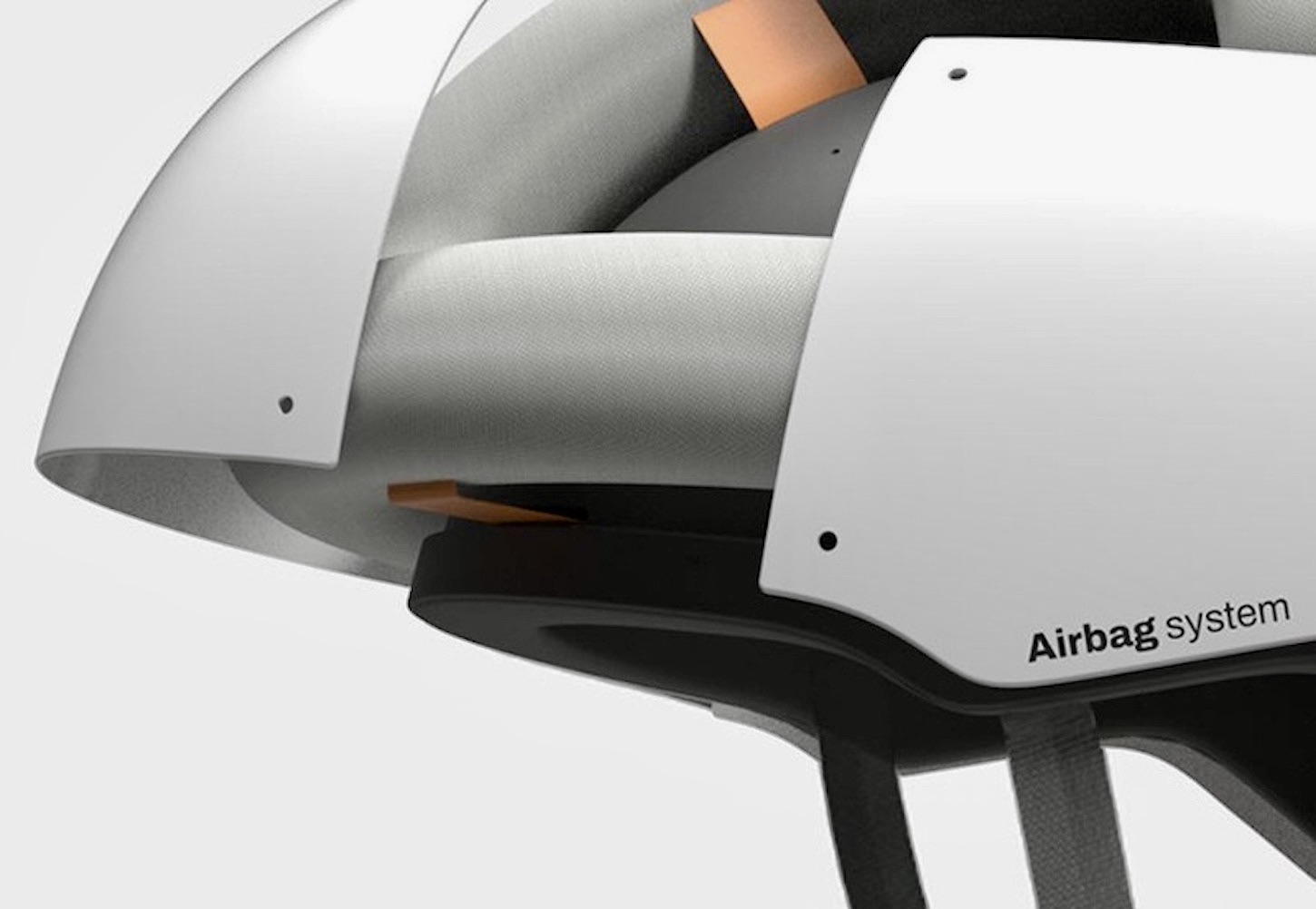

POC and Autoliv have joined forces to study and develop helmets equipped with airbag technology with the goal of improving head protection and reducing the consequences of an impact.
Head injuries alone account for half of the deadly bicyclist injuries. Although it is established that helmets are beneficial to head safety, the latest Bicycle Safety report by Swedish insurance company Folksam makes the case that helmet absorption efficiency could still be greatly improved, especially when collisions occur with a car at speeds above 20 km/h (12 mph).
POC and Autoliv have been working together to assess the potential of using airbag technology in helmets. The airbag would act as the initial energy absorber while the underlying helmet would be the following energy absorber.
After conducting a pre-study, conclusion from the Autoliv research team is that a bike helmet with an integrated airbag can significantly improve protection and reduce the consequences of impacts to cyclists. The combination of both absorbing technologies enables a reduction of the peak linear head acceleration and significantly reduced head injury risk in impact tests. The pre-study also showed that the protection improvements could be reached without critically compromising the design, weight, or comfort of a helmet designed with integrated airbag technology.
“Autoliv is committed to the vision of Saving More Lives and to providing world class life-saving solutions for mobility and society. The safety of vulnerable road users, such as bicyclists and e-bike riders, is high on our agenda. Therefore, it was natural to collaborate on this initiative with POC, a leader in bicyclist safety, to explore how to improve helmet protection in current standard testing and more challenging scenarios, such as higher impact speeds,” says Dr. Cecilia Sunnevång, Vice President Research, Autoliv.
The pre-study showed that the addition of airbag technology on top of the helmet can significantly contribute to enhanced safety performance, especially in linear impacts. It is estimated that the risk for a bicyclist to sustain moderate to fatal head injuries is reduced from 80% to 30% in a 20 km/h (12 mph) impact.
“Our safety mission drives everything we do, and we always challenge conventional thinking in order to improve protection. Helmets are tested and certified in a laboratory setting and can never fully address all the real-world variables of bike crashes. Together with Autoliv, who are world-renowned and have some of the most advanced testing and research facilities in the field, we have embarked on a development journey with airbag technology, asking ourselves what could be done to excel in current test scenarios and push the envelope towards even more shock absorbing capacity,” says Oscar Huss, Chief Product Officer, POC.
Finding new ways to save lives
Boosted by the increased environmental consciousness and the emergence of e-bike commuting, the number of bicycle riders worldwide is increasing rapidly. This growth needs to be supported by an improved helmet protection, especially at higher speeds enabled by e-biking. During the pre-study, Autoliv and POC developed the initial concepts by advanced simulation tools and conducted correlated physical crash tests. The successful outcome of the pre-study will now lead to further testing and refinement with the objective of developing the concept further and potentially bringing a product to the market.
More information is available online, where readers can download Autoliv’s full report of the pre-study testing.


